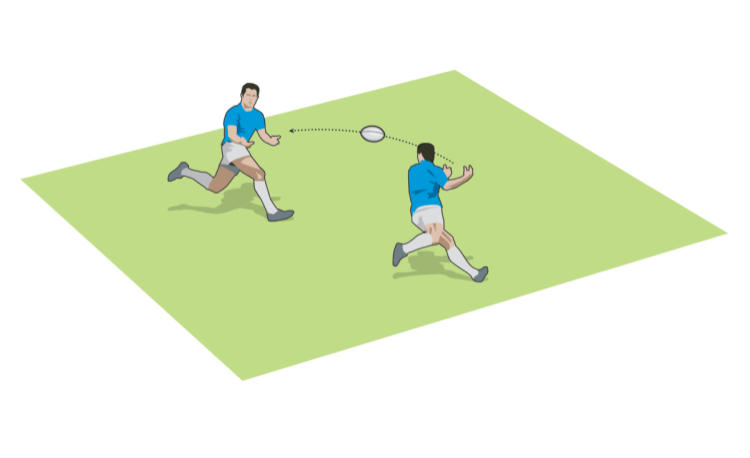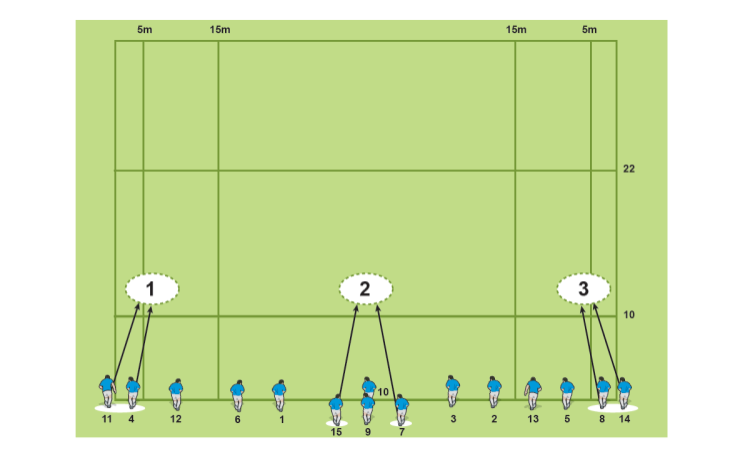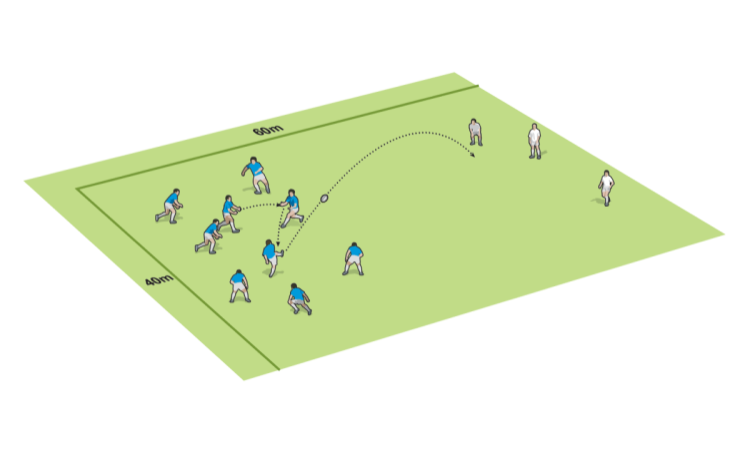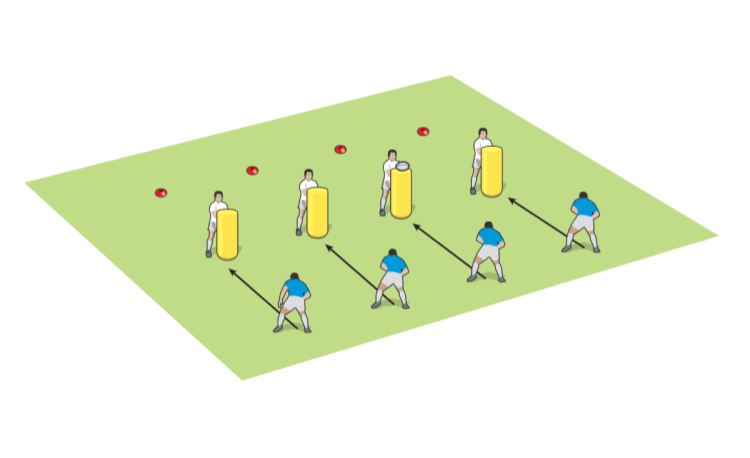You are viewing
1 of your 2 free articles
Passing under pressure
Passing and Handlingby Dan Cottrell
U11–U12 | HANDLING 3
Get players used to fixing a defender by running straight and attacking his inside shoulder, then passing in front of a player running on to the ball


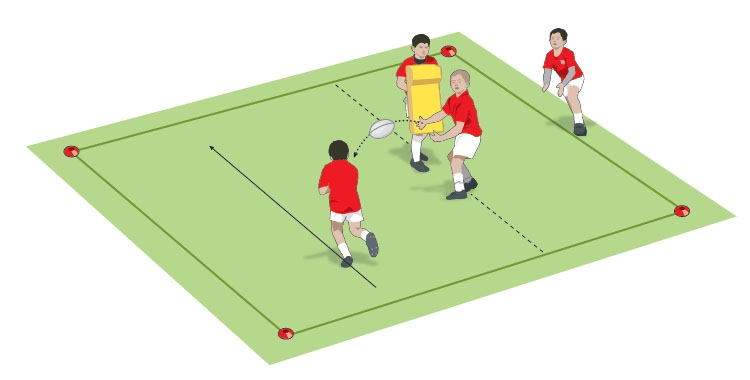
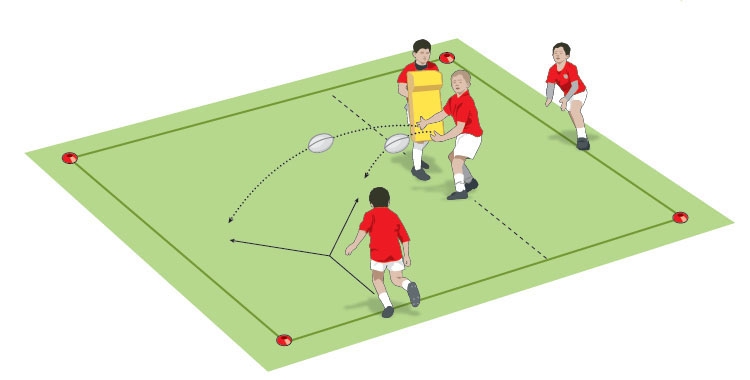
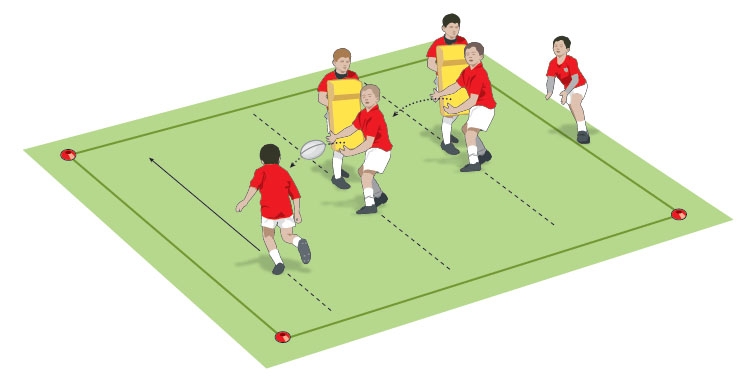
Have players lining up to take their turn, or set up more areas if you have enough ruck pads.
“Reach for the ball to take it early”
“Try and run at match pace”
“Look where you’re passing”
Get players used to fixing a defender by running straight and attacking his inside shoulder, then passing in front of a player running on to the ball
- Put two attackers, 2m apart, on one side of the 6m x 4m area. Position a ruck pad holder on the other side of the area 4m from the first attacker. Position a feeder to the side of the area 2m from the first attacker.


- When you say “go”, the first attacker accelerates directly at the ruck pad holder, who also advances at pace.
- As the players advance, the ball is fed to the attacker about 1m from the ruck pad holder and, just before contact, he passes the ball to the second attacker who is running in support.

- Repeat from both ends of the area, making sure every player tries out every role.
- Develop by varying the length of pass the first attacker has to make – short or long.

- When mastered, play a 3v2 so the first and second receivers are under intense pressure from the pad holders and have to move the ball quickly to the third attacker. Or, the ruck pad holders can move onto the next defender. The ball carrier can dummy pass and go himself.

You will need
- A 6m x 4m area
- 1 ball
- Cones
- 2 ruck pads
Got more players?
Have players lining up to take their turn, or set up more areas if you have enough ruck pads.
What to tell your players
“Reach for the ball to take it early”
“Try and run at match pace”
“Look where you’re passing”
Newsletter Sign Up
Coaches Testimonials

Gerald Kearney, Downtown Las Vegas Soccer Club

Paul Butler, Florida, USA

Rick Shields, Springboro, USA

Tony Green, Pierrefonds Titans, Quebec, Canada
Subscribe Today
Be a more effective, more successful rugby coach
In a recent survey 89% of subscribers said Rugby Coach Weekly makes them more confident, 91% said Rugby Coach Weekly makes them a more effective coach and 93% said Rugby Coach Weekly makes them more inspired.
Get Weekly Inspiration
All the latest techniques and approaches
Rugby Coach Weekly offers proven and easy to use rugby drills, coaching sessions, practice plans, small-sided games, warm-ups, training tips and advice.
We've been at the cutting edge of rugby coaching since we launched in 2005, creating resources for the grassroots youth coach, following best practice from around the world and insights from the professional game.
More from us
© 2023 Rugby Coach Weekly
Part of Green Star Media Ltd. Company number: 3008779
We use cookies so we can provide you with the best online experience. By continuing to browse this site you are agreeing to our use of cookies. Click on the banner to find out more.





